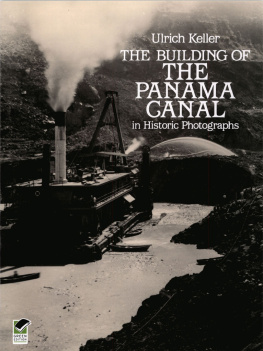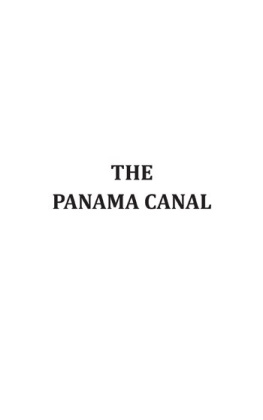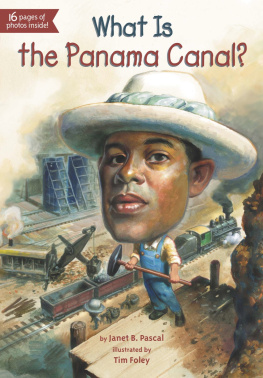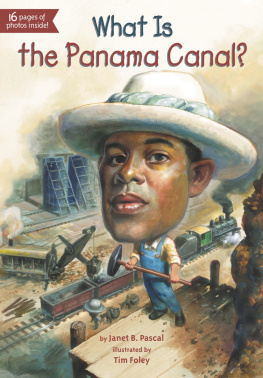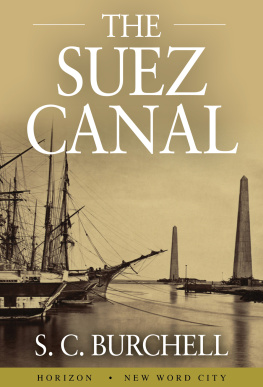At Dover Publications were committed to producing books in an earth-friendly manner and to helping our customers make greener choices.
Manufacturing books in the United States ensures compliance with strict environmental laws and eliminates the need for international freight shipping, a major contributor to global air pollution. And printing on recycled paper helps minimize our consumption of trees, water and fossil fuels.
The text of this book was printed on paper made with 10% post-consumer waste and the cover was printed on paper made with 10% post-consumer waste. At Dover, we use Environmental Defenses Paper Calculator to measure the benefits of these choices, including: the number of trees saved, gallons of water conserved as well as air emissions and solid waste eliminated.
Please visit the product page for The Building of the Panama Canal in Historic Photographs at www.doverpublications.com to see a detailed account of the environmental savings weve achieved over the life of this book.
Copyright
Copyright 1983 by Ulnch Keller.
All rights reserved
Bibliographical Note
The Building of the Panama Canal in Historic Photographs is a new work, first published by Dover Publications, Inc, in 1983.
Book design by Barbara Effron
Library of Congress Cataloging-in-Publication Data
The Building of the Panama Canal in historic photographs.
ISBN-13: 978-0-486-24408-2
ISBN-10. 0-486-24408-3
1. Panama Canal (Panama)HistoryPictorial works. I. Keller, Ulnch, fl. 1977
| TC774.B86 2008 |
| 627.37972875dc22 |
| 82-9543 |
Manufactured in the United States by Courier Corporation 24408314
www.doverpubhcations.com
Introduction
Ever since 1513, when Balboa discovered the Pacific behind the narrow land bridge connecting the continents of North and South America, men dreamed of building a canal to join the two oceans. Holy Roman Emperor Charles V entertained the idea quite seriously, and ordered a land survey in the Panama region to explore the feasibility of an artificial waterway. But it was determined that the difficulties of the project far exceeded the technical resources of the time. Moreover, the piercing of the Isthmus appeared to many contemporaries as such a bold, if not blasphemous, proposition that a Jesuit scholar felt compelled to utter the warning:
I believe there is no humaine power able to beate and breake downe those strong and impenetrable Mountains, which God hath placed betwixt the two Seas, and hath made them most hard Rockes, to withstand the furie of two Seas. And although it were possible to men, yet in my opinion they should fear punishment from heaven, in seeking to correct the workes, which the Creator by his great providence hath ordained and disposed in the framing of this universall world.
Considerations of this nature put the canal question to rest for two hundred years. Only in the nineteenth century, the age of scientific and industrial progress, did the spirit of enterprise begin to outweigh the fear of God and the menace of physical obstacles. Beginning with Alexander von Humboldt, various explorers toured the Isthmus, searching for an ideal canal location and making a variety of proposals.
The man who finally chose Panama as the most appropriate site and tackled the enormous financial and technical problems involved in an enterprise of such magnitude seemed to be predestined for the job. Ferdinand de Lesseps had done the impossible beforehe had completed the celebrated Suez Canal in 1869and he declared that the mountains of Panama represented a less formidable foe than the Egyptian desert. He even insisted on the practicability of a sea-level canal as opposed to a more modest lock canal.
Thanks to his reputation (and to enormous bribes paid to bankers, politicians and newspapers), Lesseps was able to raise an initial capital of 300 million francs ($60 million). In January 1881, an advance party of French engineers arrived on the Isthmus, followed by an ever-increasing stream of workers and machinery. By May 1884, the labor force had swollen to a total of 19,000 men. But progress was much slower than expected. As it turned out, Lesseps assessment of the geographical conditions and the technical as well as financial means necessary to overcome them had been grossly inadequate. The mountain range at Culebra required a much greater volume of excavation than the original plans called for, the technical plant was too light for the task at hand, a bewildering and unmanageable diversity of machinery had been brought in and the employment of over two hundred individual contractors created additional confusion, not to mention skyrocketing costs.
But the most severe and eventually crippling problem was caused by the ravages of yellow fever, typhoid fever and malaria. Enormous sums were spent on hospital facilities which were praised as the finest of their time but provided little relief since the causes of the diseases and effective cures remained elusive. As a result, about 22,000 workers died on the job, making it increasingly difficult to recruit volunteers for canal construction. It must be emphasized, though, that contemporary observers were unanimous in their admiration for those Frenchmen who did go to Panama and stuck to their deadly jobs with a courage comparable to that of soldiers in battle.
Combined into one confusing knot, the medical, technical and financial problems became insurmountable for Lesseps, whose Compagnie Universelle du Canal Interocanique declared bankruptcy in 1889. One and a half billion francs had been expended and 70 million cubic yards had been excavated, but in the end 800,000 shareholders, mostly from the low-and middle-income range, lost every franc of their investment. It was the biggest financial fiasco of the nineteenth century. Revelations about the astronomical bribes and kickbacks involved added a great deal of legitimate bitterness to the ensuing public debate.
In 1894, a new French canal company was founded with a very modest capital stock of 65 million francs. The company resumed construction on a small scale, primarily trying to maintain the building concession that had been granted to Lesseps by the Colombian government, in whose territory the route of the canal was situated. It was obvious, though, that the French were in no position to complete the project. A bigger economic power was needed to launch a fresh attempt where the French had run aground.
The only major question to be resolved was the set of conditions under which the building concession would change hands. In this respect, the American government was in an enviable position. Clearly, the French canal company desired nothing more than to sell its Panamanian assets and to pull out of a hopeless situation. By the same token, it appeared likely that the Colombian government would be accommodating because a very real possibility existed that the Americans would choose an alternative canal site in Nicaragua. In fact, the feasibility of a Nicaraguan waterway had been studied in detail and an American stock company had made an abortive attempt to begin construction there, losing $6 million in the process. More than that, in January 1902, the House of Representatives had authorized President Theodore Roosevelt to build a Nicaraguan canal at a cost of $180 million, of which $10 million were available for immediate expenditure. Later that year, both houses passed a bill appropriating $136 million for the acquisition and continuation of the Panamanian canal project, but Roosevelt was free to revert to the alternative site should he be unable to obtain favorable conditions from the French and Colombians.

